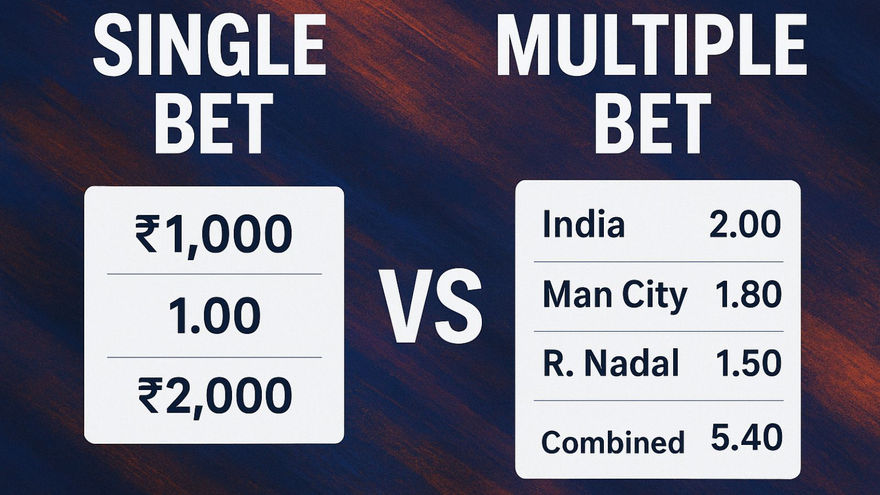When stepping into the world of sports betting, one of the first decisions you’ll face is choosing between single bets and multiple bets (also known as accumulators or parlays). While both offer their own sets of advantages and risks, knowing when and how to use them can significantly impact your betting success. In this article, we’ll break down the key differences between single and multiple bets, with examples to help you choose the right strategy.
What is a Single Bet?
A single bet is the most straightforward form of sports betting. It involves placing a wager on one outcome of a single event. If your selection wins, you receive a payout based on the odds.
Key Features:
Involves only one selection
Lower risk
Simpler to understand and manage
Easier to track results
Example:
You bet ₹1,000 on India to beat Australia in a cricket match at odds of 2.00.
If India wins, you get: ₹1,000 × 2.00 = ₹2,000
Profit: ₹1,000
What is a Multiple Bet?
A multiple bet (also known as an accumulator or parlay) combines two or more selections into one bet. All selections must win for the bet to be successful. The risk is higher, but so is the potential reward due to the multiplying effect of the odds.
Key Features:
Combines 2 or more selections
Higher potential payout
Increased risk (one loss means the whole bet loses)
Ideal for experienced bettors or those chasing higher returns
Example:
You place ₹1,000 on a 3-leg accumulator:
India to beat Australia (2.00)
Manchester City to beat Chelsea (1.80)
Rafael Nadal to win a tennis match (1.50)
Combined odds: 2.00 × 1.80 × 1.50 = 5.40Potential payout: ₹1,000 × 5.40 = ₹5,400Profit: ₹4,400 — but only if all three win.
Key Differences: Single vs Multiple Bets
Feature | Single Bet | Multiple Bet |
Number of Selections | 1 | 2 or more |
Risk Level | Low | High |
Payout | Lower, safer | Higher, but riskier |
Best For | Beginners, conservative bettors | Experienced or high-reward seekers |
Outcome Dependency | One event only | All selections must win |
Pros and Cons
Single Bet Pros:
Easier to win
Simple to manage
Suitable for beginners
Single Bet Cons:
Lower payout
Multiple Bet Pros:
Huge payouts from small stakes
Exciting and strategic
Multiple Bet Cons:
Riskier
One incorrect pick loses the entire bet
Which Bet Type Should You Choose?
It depends on your risk appetite, experience level, and betting goals.
Choose Single Bets if: You prefer a safer approach, want more consistent returns, or are new to betting.
Choose Multiple Bets if: You’re confident in several outcomes and are chasing big wins from small stakes.
















